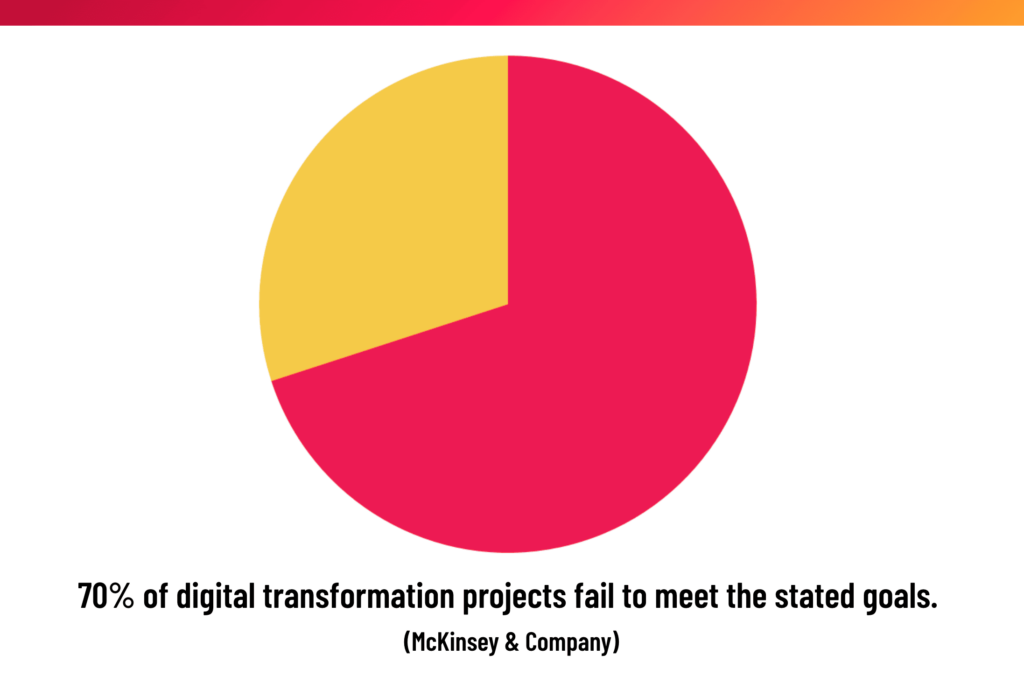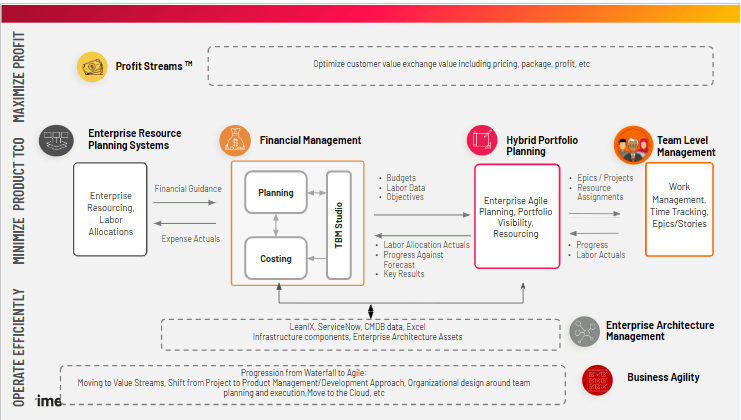Revving Up or Rolling Back: The “Secret” Solution to the Auto Industry’s Stalling Agile Transformations
The senior leader in charge of the transformation closed the door behind us and asked me to take a seat, then leaned on his desk and crossed his arms. “Be straight with me, Rod. What’s not working? Why can’t we get this thing over the hump? We’ve invested so much and some of the stats say productivity has actually gone down!”
It’s never easy being called to account. And what made it even harder this time was that I knew exactly what I had to say. But he wasn’t going to want to hear it. “Well, the trouble is, you’ve been going about this whole transformation backwards…”
And it only got worse from there…
Embarking on an Agile transformation at scale is no small feat, especially within the automotive sector where legacy tools and methods are constantly battling with multi year-long product development and fixed manufacturing horizons and the relentlessly fast progression of technology.
Despite years of effort, significant investment, and the guidance of various consultancies, progress at one leading automotive organization often felt frustratingly slow, teetering on the brink of failure—as 70% of transformations do.
Yet, what if this perceived stagnation is not a dead end but a pivotal moment just shy of breakthrough success? As the latest consulting firm brought in to assist, we arrived at some eye-opening realizations early on, and have had more than one difficult conversation along the way.
This exploration delves into the heart of this ongoing journey, uncovering the critical junctures and untapped potential that could propel one stalling transformation into a realm of exponential growth and innovation. Join us as we unravel the complexities of Agile transformation, offering insights and strategies for turning perceived setbacks into springboards for success.
The Agile Transformation Crossroads: Understanding the Journey
The shift towards agile methodologies often represents a critical turning point for organizations striving to navigate a downturn in profitability amidst the challenges of the Digital Age. This transition places leaders, many of whom are navigating the waters of agility and enterprise thinking for the first time, in a precarious position.
They find themselves tasked with orchestrating a comprehensive change without the necessary tools at their disposal. The lack of real-time data, compounded by a reliance on manual reporting, leaves them without the crucial insights needed to guide resource allocation, budgeting, and strategic direction effectively.
Picking a Destination: Unpacking the Core Objectives
In the quest for organizational improvement, three key priorities typically emerge:
- Maximize Profit: Efforts focus on reducing delays, optimizing pricing, enhancing quality, and ensuring timely delivery.
- Minimize Product Total Cost of Ownership (TCO): Strategies include implementing Enterprise Resource Planning Systems, Financial Management, Hybrid Portfolio Planning, and Team Level Management.
- Operate Effectively: The transition from Waterfall to Hybrid methodologies aims to connect OKRs, shift towards value streams, and evolve from project-based to product-centric approaches (Agile at Scale Framework).
Why They Hit the Breakdown Lane
Despite the outlined objectives, our client and their previous advisors fell into a very common trap: they narrowed the actual focus down to the third priority: enhancing operational effectiveness with the hope that agile adoption will automatically address profitability concerns.
The challenge of minimizing TCO was deemed too complex, sidelining it as a secondary concern.
Consequently, the transformation effort failed to leverage its full potential, focusing predominantly on people and processes without integrating broader enterprise considerations or aligning new tools with the new ways of working they were trying to implement.
Popping the Hood: What Needs to Be Fixed
I don’t want to discount the client’s notable successes and moments of brilliance. But this section delves into the systemic challenges we identified—highlighting obstacles that, though significant, present opportunities for impactful solutions.
Top 10 Repairs and Replacements Our Mechanics Identified
- Unpredictable Outcomes: Inadequate resource and capacity planning has led to a predictability rate of less than 30% at both Vehicle Domain and Squad levels. Commitments were made to workloads that were unachievable, presenting significant challenges in budget forecasting, vehicle run rates, and resource management.
- Resistance to Agile Culture: The entrenched waterfall methodologies are at odds with agile practices, resulting in change fatigue. Transitioning from decades of traditional hardware engineering methods to Agile for Hardware has proven challenging.
- Ineffective Communication: The shift towards working from home, coupled with a culture of keeping cameras off, has fostered an over-reliance on communication through Jira notifications and Teams messages, reducing effective face-to-face interactions.
- Inadequate Management of Risks and Obstacles: Risks and obstacles are not being effectively prioritized, escalated, or managed in a timely manner. Unanticipated risks at the Portfolio level are obstructing progress due to reliance on inaccurate, manually created metrics that obscure the real issues.
- Lack of Effective Portfolio Planning: The absence of a dedicated Portfolio management tool to align and track strategic initiatives with business objectives has resulted in reliance on spreadsheets for these tasks.
- Normalization of Failure: A cultural issue where failure has become accepted, impeding progressive transformation. The regular delay of vehicles diminishes the impact of non-delivery, leading to a lack of urgency and accountability in planning.
- Inaccurate Project Tracking: Reliance on manual data entry into systems like PowerPoint results in outdated and inaccurate reporting.
- Suboptimal Role Assignment: Key agile and leadership roles are often occupied by individuals lacking a genuine interest or background in agile methodologies, affecting capacity planning, resource utilization, and accurate forecasting.
- Disjointed Priorities: Without appropriate tools, strategic priorities remain misaligned and disconnected from delivery, leading to a strategy that is not effectively translated into action.
- Dependence on Rigid Legacy Tools: The current tools do not meet the dynamic requirements of Agile at scale, with an over-reliance on outdated planning tools and unchallenged, unrealistic milestones, causing avoidable delays.
Some of It is the Car, Some of It is the Driver
When I told the senior leader they’d been going about the transformation backwards, here’s what I meant:
Like so many other large enterprises that want to reach those core objectives outlined above, our client had started this massive undertaking at the “bottom” of the organization—at the Squad level with their developers, designers, and a few select engineers. And, they saw some initial successes despite the expected pushback—”this is the way we’ve always done it, why fix what’s not broken?”—and a somewhat long learning curve.
But, before long, those teams ran into roadblocks they couldn’t surmount:
- Planning and financing models that are all based on waterfall methods, wholly incompatible with functional agility
- Legacy tools and processes that were not designed to support Agile software or hardware efforts
- Lack of buy-in and support from the executive levels of the organization, where strategy is decided and budgets are doled out
Even though they achieved some hard-won successes scaling this new way of working to the program and portfolio levels, in the end they were only partial wins.
And the car was swiftly running out of gas.
The challenge during an Agile transformation isn’t just in adopting new workflows and Agile processes but in aligning entire enterprise ecosystems—finance, resourcing, and architecture—to a cohesive hybrid model. Changes need to be made at every level of the organization, meaning a successful transformation really needs to start from the top. And, to achieve that kind of alignment, tooling has to come into the picture.
If we could convince our client to flip the script, they could resolve significant issues that stemmed from the highest levels:
- Strategic Misalignment: The absence of a cohesive tool results in strategic objectives being isolated within silos, causing fragmented efforts across departments, domains, suppliers, and dependencies.
- Resource Mismanagement: Poor resource allocation and planning adversely affect both the predictability and the success of project deliveries.
- Inflexible Architectural Frameworks: Failing to adapt LeanIX-type architecture to accommodate agile or hybrid methodologies, coupled with a lack of appropriate tools, leads to cumbersome and inefficient processes.
- Financial Disconnect: Traditional budgeting methods are ill-suited to agile ways of working, creating a divide between financial planning and agile execution. Achieving success necessitates transparent and well-controlled budgeting practices.
The Tools Every Automaker Should Have in the Trunk
While this transformation needs some admittedly serious repairs, they’re actually far closer to turning that corner to successful enterprise agility than the senior leader surmised, and I told him as much. And while the expert consultants, developers, and Agile personnel from Cprime—the mechanics in this metaphor—had a lot of work to do, we would be using the same tools every automaker should have at their disposal.
IT Financial Management and Enterprise Architecture Solutions
Achieving a balance between architectural strategy and financial management is critical in the enterprise technology landscape, and tools and frameworks that support Enterprise Architecture Management (EAM) and IT Financial Management (ITFM) are crucial. ApptioOne, as an example, optimizes IT spending, aligning it with strategic business goals. Integrating an ITFM tool with an EAM framework like LeanIX provides a holistic view of IT finances that is crucial for strategic decision-making. Integrated directly with their Enterprise Resource Planning (ERP) tools of choice, the entire funding and strategic portfolio picture becomes crystal clear.
However, maximizing the benefits of these tools requires expertise. Cprime fills this gap with its deep knowledge in integrating enterprise technology and financial management. By offering strategic consulting and optimization services, Cprime helps organizations to effectively merge EAM and ITFM practices, ensuring IT investments are both efficient and aligned with business objectives.
Hybrid Portfolio Planning Solutions
Hybrid portfolio planning solutions offer a comprehensive approach to fostering an agile enterprise. These tools are instrumental in synchronizing finance, resources, and architecture, providing a unified platform for agile transformation.
Apptio TargetProcess stands out as a prime example of how such solutions can drive efficiency and alignment across an organization. Here’s a closer look at the benefits:
- Streamlined Resource Management: These solutions automate and refine resource management, significantly reducing risks and enhancing utilization. This is crucial for boosting predictability and achieving desired outcomes.
- Strategic Planning and Enhanced Visibility: By bridging the gap between strategy and delivery, these tools offer a clear view of connected Objectives and Key Results (OKRs), roadmaps, scenario planning, and RAG (Red, Amber, Green) status indicators, ensuring that every team is aligned and moving towards common goals.
- Seamless Financial Integration: With the capability to integrate into existing financial systems, tools like ApptioOne and TargetProcess ensure that agile operations are fully aligned with financial management. This integration guarantees adherence to budgets and provides a transparent view of financial performance with real-time, accurate cost data.
With these solutions tied together, enterprise strategy can be mapped all the way down to the day-to-day activities the development teams manage in their team-level work management solutions. Jira is a popular option, and the one this client uses.
What These Tools Can Do
Organizations that have embraced this holistic suite of tools, augmented by guidance and elbow grease from Cprime experts, have reported significant improvements:
- Accelerated Time-to-Market: Experiencing over a 60% improvement, which is vital for maintaining a competitive edge in the rapidly evolving automotive sector. (Gartner)
- Reduced Risk and Compliance Issues: Achieving a 20-30% reduction, thanks to enhanced risk management and compliance practices.
- Boosted Profit Margins: Witnessing more than a 5% annual increase, indicative of more efficient operations and strategic financial planning.
In other words, they’re back on the road, moving toward their destination at 110 kph, and watching their competition in their rearview mirror.
Will this client I’ve been talking about do the same? I’m not sure yet. We just had that difficult conversation not long ago. But, to that senior leader: if you’re reading this, I hope you will.




